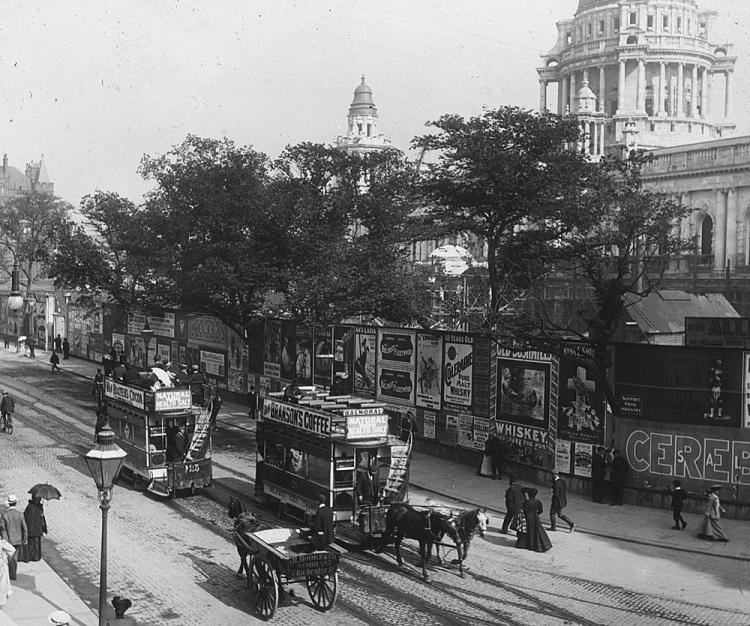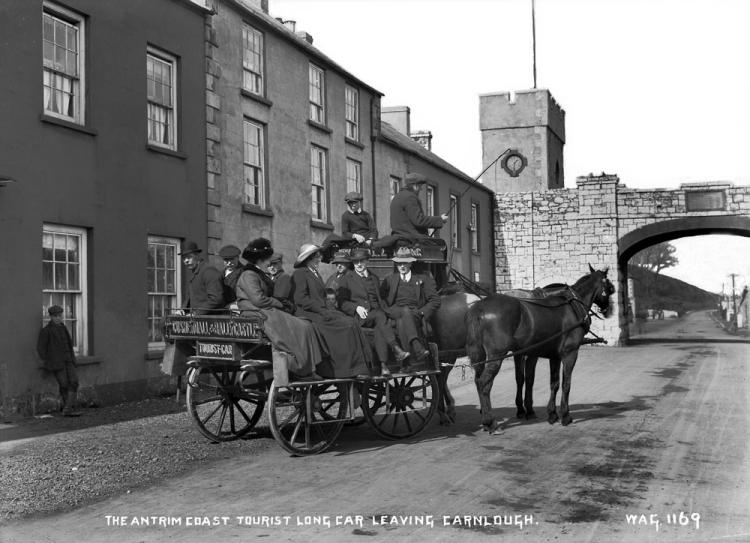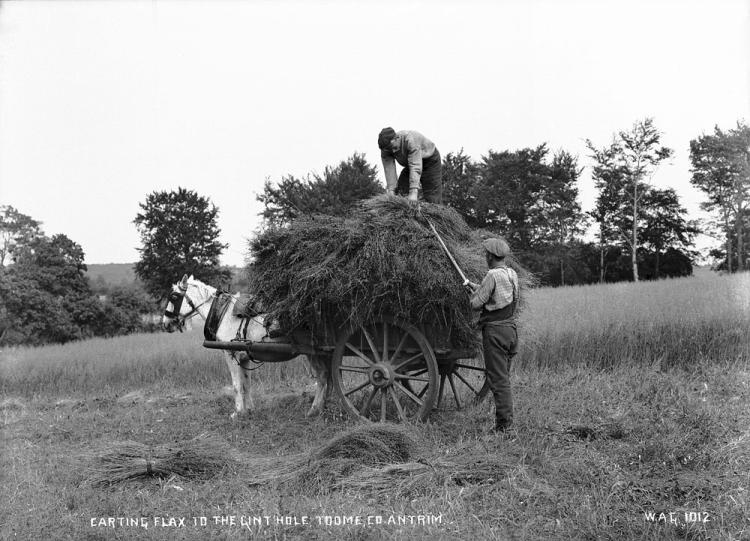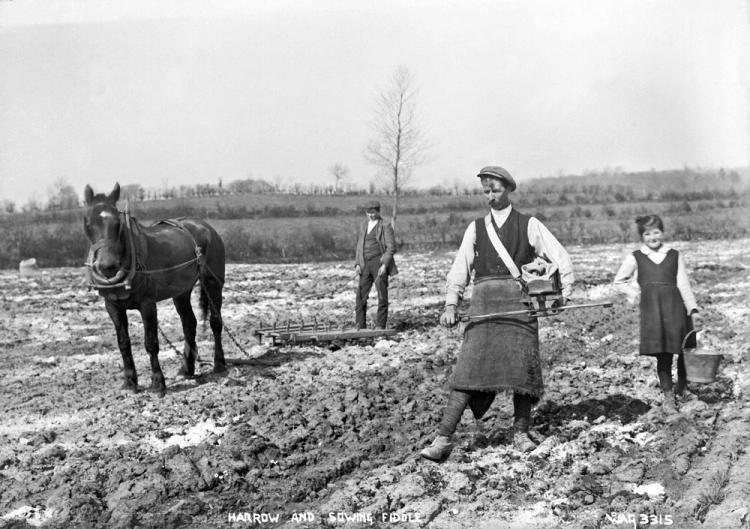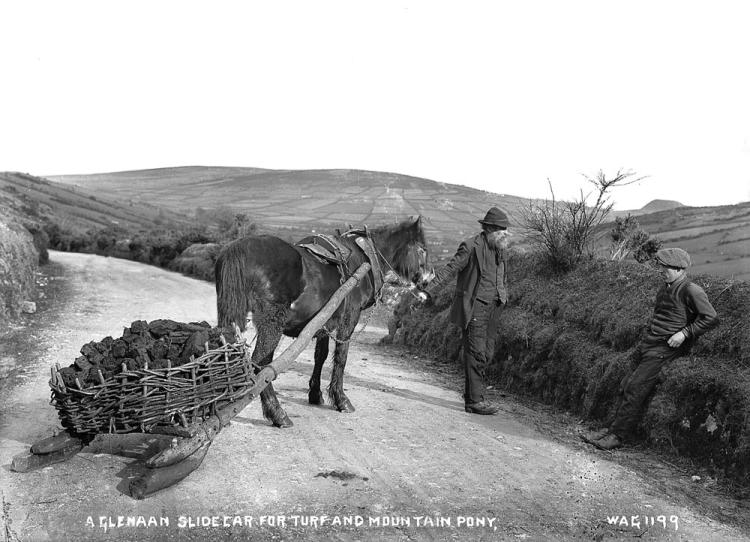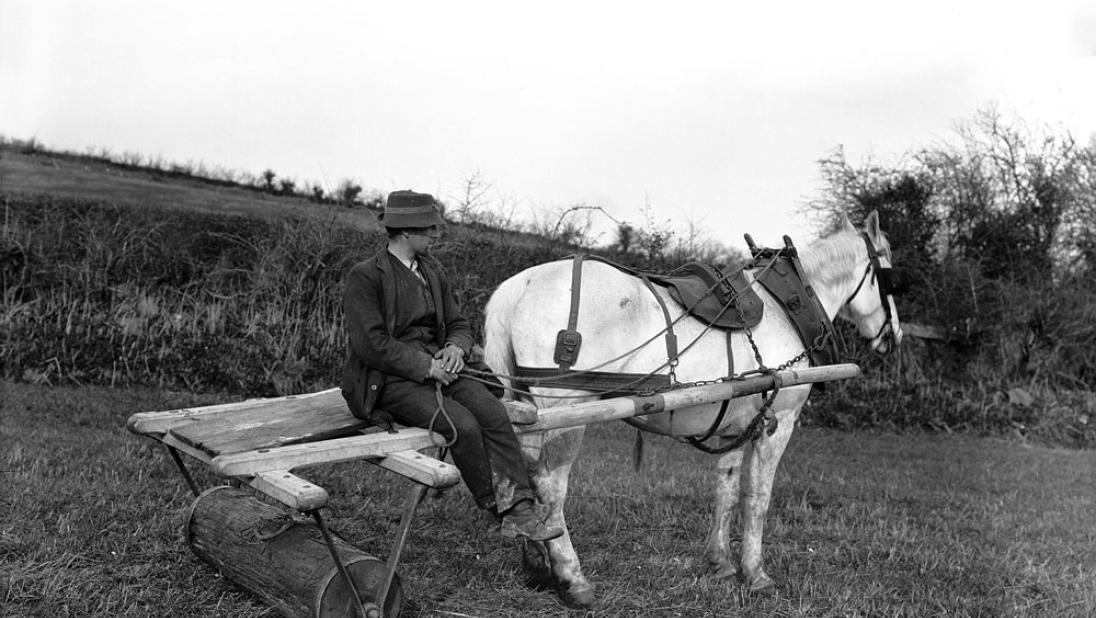
Horses, a constant companion
Horses are regularly seen carrying out a service on behalf of their owner, whether it be carrying, pulling, transporting or performing. From towns to the countryside, mountains to the seashore, and even war, our photographs demonstrate how horses were an ever-present feature of people’s lives 100 years ago.
Cities, towns and villages
In the cities, towns and villages horses were primarily used for the transportation of both goods and people. Double-decker horse-drawn trams were particularly popular in cities such as Belfast, whilst smaller single-decker horse-drawn buses, long cars and stagecoaches were used in towns and villages including Carnlough and Annalong.
Such modes of transportation provided vital links between towns:
“A stagecoach service, which operated between Coleraine and Londonderry, passed through Eglinton two or three times a day. The horses would stop for a rest near Eglinton at Longfield Lodge.” – Notebook of Mr. James Hunter, Myroe, County Londonderry.
Market days and fair days
On market days produce including eggs, turf and vegetables was brought in from the countryside and surrounding areas in carts pulled by horses.
Horses were also brought into towns en masse in order to be bought and sold at horse fairs. At a horse fair in Limavady in 1903 first class farm horses fetched from £25 to £35, whilst horses suitable for ploughing and jobbing went for £5 or £10.
Countryside
In the countryside horses were used for a variety of reasons. In addition to transportation they carried out a significant proportion of the work on farms. Their size and strength helped farmers to prepare and cultivate their land by pulling along implements such as ploughs and harrows.
Uplands
Sometimes however, it was necessary to go back to basics:
“When my father went to a neighbouring haystack he usually took his horse and slide car but sometimes he would go to places where the meadows were so scattered and inconvenient that he just brought his rope, and all the men carried loads on their backs all day.” – Notebook of Mr. George Sheridan, Gortaree, County Fermanagh.
Coast
“Local fishermen found another profitable activity in the gathering of ‘wrack’ [marine vegetation]. A flat boat was used to collect this material which was present in great quantities on and near the shores of Lough Foyle. After spending the better part of a day filling their boats the fishermen would head for the Roe or Burnfoot Rivers where they had certain areas in which to stack their wrack. From here it was taken in wheel barrows to nearby roads where farmers were waiting with horses and carts to collect it. This wrack was then taken to farms, in many cases ten miles away, to be spread on the land. A boat load the equivalent of two cart loads would cost about five shillings.” – Notebook of Mr. James Hunter, Myroe, County Londonderry.

Unloading turf from a barge to a horse and cart, Rathlin Island, County Antrim.
Sport and recreation
Horses also served an important function within sport and recreational activities. Horse riding, horse jumping and horse racing were all popular activities, much like they are today.

Horse jumping at Balmoral Showgrounds, Belfast, 1900.
Upkeep and maintenance
In the early 1900s the local blacksmith or farrier was responsible for caring for horses’ hooves and shoeing them. This could prove to be a risky occupation – there were numerous reports of blacksmiths being kicked by horses whilst shoeing them. Sometimes this resulted in severe injuries, and on occasion, death.
The maintenance of areas frequented by horses should not be forgotten. In Belfast the role of the street cleaner was a particularly important one in the age of horse-drawn trams.
War
During the First World War (1914-18) the skills and abilities of horses were exploited on a phenomenal scale. From performing cavalry roles to transporting supplies, ammunition and equipment, horses played a pivotal role in the conflict. Over the course of the war Britain lost over 484,000 horses – one horse for every two men.
As the 20th century progressed, the demand for horses both in war and peacetime gradually depleted as the demand for mechanised vehicles and farm equipment grew. Once common sights such as the horse-drawn tram slowly faded into obscurity in Ulster, along with the familiar ‘clip clop’ of hooves on the streets.
